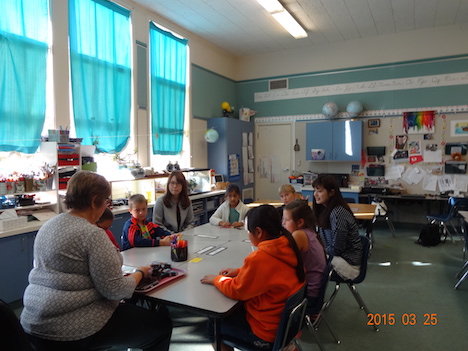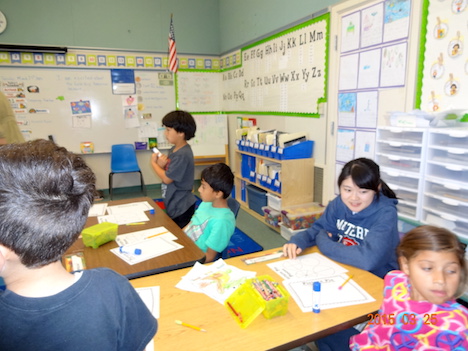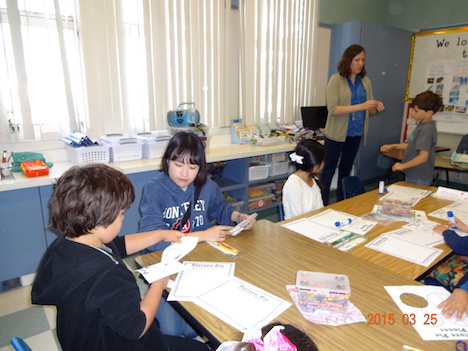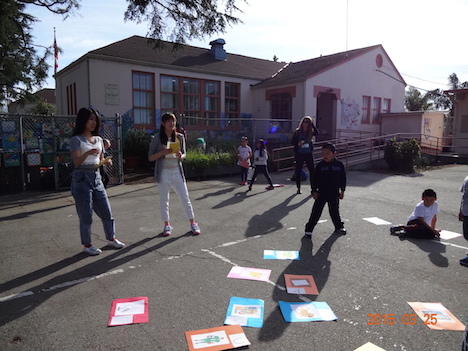2015年 報告(2014年度プログラム)
2015年 海外短期フィールドワーク 児童発達学科 報告10-1
【2015年 海外短期フィールドワーク 児童発達学科 報告10-1】
■ Cabrillo College(アメリカ カリフォルニア州 サンタクルーズ) で、3/15〜3/31までの海外短期フィールドワークです。
■日付は、日本時間での表記です(現地は、1日前になります)。

2015/03/25
今日はもう一つの小学校、Linscott Charter Schoolでの実習風景を紹介します。10人の学生が、2人ずつ5つのクラスに分かれて実習を2日間しました。この学生たちは、1年生から3年生が一緒になっているクラスの、あるグループに参加しています。子どもたちは「電気とは何か」について、電池を使って話し合いをしていましたね。
In Linscott Charter School, the students had their internships in pairs in 5 different classes. In this mixed-grade class (1st to 3rd ), the children had small group activities. These students participated in the group learning electricity; we use electricity every day. Obviously, electricity is important to us and now you can find out how it works. The students seemed to learn a lot from the children!

2015/03/25
これは1年生のクラスです。こちらの学生は、writing tableと呼ばれているグループで、”I like ___”を書くワークシートのお手伝いをしていました。これならできそうですね!
This is a 1st grade class. This student took part in the writing group helping the children completing their worksheet such as “I like ___”. This must be the right level for the students who need to practice what they learn with engaging activities!

2015/03/25
こちらも同じ1年生のクラスで、Reading tableのグループです。ストーリーの内容を書いたり、その中の単語の中に含まれている音素を見つける練習もしていました。例えば、「短い母音 ”a”の含まれる単語をさがしなさい」という問題です。こうなると1年生でもついていけなくなるでしょうか? 発音練習が必要ですね!
In the same 1st grade class, children were reading stories in this group. After reading all the stories and answering the questions, the children were asked to find words in a book or a list containing a short “a” sound. This type of activity is harder for the students because they need to practice their pronunciation first!

2015/03/25
こちらの2人はキンダーのクラスで、アルファベットのカルタ取りの活動をしていました。子どもたちはアルファベットを習い始めているところで、わかる子とまだわからない子の差が出ていたようですね。それにしても、読み札の英語の発音が悪くて、子どもたちもずいぶん最初は戸惑っていたようですが、先生の補助もあり、なんとか楽しんでくれたのは、よかったです。
These two students were doing Karuta card game activity for their kindergarten class. Karuta is one of the Japanese traditional games. First, a person read the card like this way. And the others look for a card which is the picture and word drawn about it. How many cards can you find? The winner is having the cards most. The children had a hard time listening to what the students said in English which didn’t sound like English!! Alas, poor children!!!
